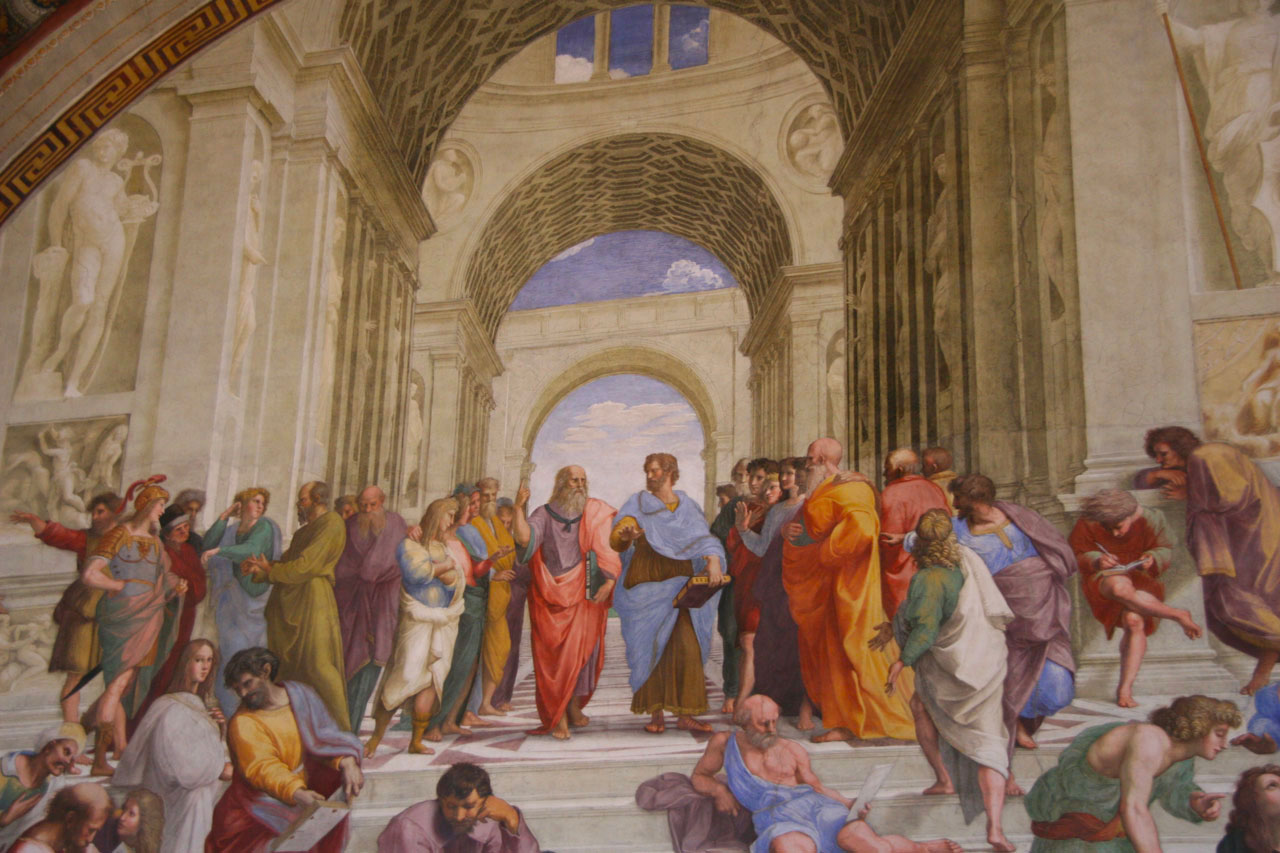At the beginning of the XVI century, Rome became the most important center of the High Renaissance culture thanks to the initiative and patronage of two strong and pragmatic popes, Julius II Della Rovere (pontificate: 1503 – 1513) and Leo X Medici (pontificate: 1513 – 1521), both great art and architecture patrons and supporters.
Julius II called both Michelangelo and Raphael in Rome to work in Saint Peter’s Basilica in the Vatican. In 1505 Julius II commissioned to Michelangelo the creation of his architectural funeral monument in the church of Saint Peter in Chains. In 1508 he commissioned the decoration of the ceiling of the Sistine Chapel, following a deep crack on the ceiling, then repaired, that ruined the previous fresco representing a starry sky made few years before by the Umbrian artist Piermatteo.
Did you know that Michelangelo accepted this task with bad grace? Yes, he did because he didn’t consider himself a painter, but a sculptor, and, at that time, hadn’t any technical experience in fresco painting. Anyway, Julius II insisted and Michelangelo started to organize the work.
If you’re not so sure that a sculptor can be also a great and revolutionary painter, take part in our tours of the Vatican! Visiting the Vatican is truly a once-in-a-lifetime experience!
In 1508 Julius II called Raphael in Rome in order to repaint the rooms of the papal private apartments on the second floor in the Palace of the Vatican, nowadays open to the public and known as “Vatican Rooms” or “Raphael’s Rooms”. Unfortunately, Raphael died in 1520 and his work was completed by his collaborators. Raphael’s Rooms are extremely intellectual and summarize the humanistic culture of that time through myth’s quotes and theological and philosophical issues. Book our tour of Vatican Museums and you will have the chance to discover the complexity of these frescoes and admire how interesting the gestures of Raphael’s characters are.
Michelangelo and Raphael were appointed to destroy pre-existing works and monuments in order to re-work on them. They were allowed to proceed in this way because everybody already knew they were not just artists, but great masters, the new successors of the Classicism.
Both Michelangelo and Raphael grew so much in Rome: they improved and experimented with new techniques, worked on the most demanding challenges of their whole lives and really made history.
However, there wasn’t good blood between Michelangelo and Raphael. Raphael considered Michelangelo one of his masters. However, it seems that once arrived in Rome, he was incited by his friend and architect Bramante to discredit Michelangelo with the Pope in order to get more commissions and Michelangelo didn’t take it so well!
Apart from their different characters, Michelangelo and Raphael worked hard during their Roman period. Consider that Raphael worked on some altarpieces that are nowadays must-sees in Borghese Gallery and Vatican Museums until his death. Many years later Michelangelo will become the architect of the Apostolic Palaces and Saint Peter’s Basilica.
Have you ever visited the Vatican Museums? What Raphael’s or Michelangelo’s masterpiece impressed you the most? Tell us about your memories!


